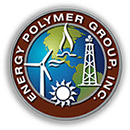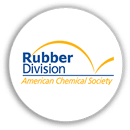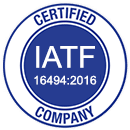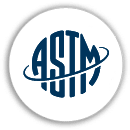ASTM D1149: Standard Test Method for Rubber Deterioration – Surface Ozone Cracking in a Controlled Environment
ASTM D1149 is a widely recognized standard developed by ASTM International. It specifies the procedures for assessing the resistance of rubber to ozone-induced surface cracking under controlled conditions. Rubber products used in outdoor environments or near ozone-generating equipment are often at risk of degradation due to prolonged exposure to ozone, which can lead to cracking and reduced durability.
By simulating real-world exposure to ozone, ASTM D1149 helps manufacturers evaluate the long-term performance and reliability of rubber materials.
Purpose and Importance of ASTM D1149
The primary goals of ASTM D1149 are:
- Evaluate Ozone Resistance: To determine how rubber materials withstand exposure to ozone over time.
- Predict Service Life: The test results help estimate the lifespan of rubber products in environments where ozone exposure is significant.
- Ensure Product Reliability: Helps manufacturers produce rubber components that can maintain their integrity and performance under harsh environmental conditions.
- Compliance with Standards: Many industries require compliance with ASTM D1149 to meet regulatory and safety standards.
Key Test Procedures in ASTM D1149
The ASTM D1149 test method involves several steps to simulate controlled ozone exposure and measure the extent of cracking in rubber samples.
1. Sample Preparation
- Rubber specimens are prepared with specific dimensions as outlined by the standard.
- The surface of the samples should be clean, free from dust, and without any pre-existing cracks or defects.
2. Conditioning
- Before the test, samples are conditioned at a standard laboratory temperature and humidity for at least 24 hours to ensure uniformity.
3. Ozone Exposure
- The rubber specimens are placed in an ozone exposure chamber, where the ozone concentration, temperature, and humidity are controlled.
- Standard exposure conditions typically include an ozone concentration of 50 pphm (parts per hundred million) at a temperature of 40°C for durations ranging from 24 to 168 hours, depending on the test requirements.
4. Observation and Evaluation
- After the exposure period, the samples are inspected for surface cracks.
- Cracking severity is evaluated using visual inspection and classified into different grades based on the extent and depth of cracks.
Factors Affecting Test Results
Several factors can influence the outcome of ASTM D1149 tests:
- Ozone Concentration: Higher ozone levels can accelerate surface cracking.
- Temperature: Elevated temperatures may enhance the rate of ozone reaction with rubber.
- Rubber Composition: Different rubber formulations show varying degrees of resistance to ozone cracking.
- Exposure Time: Longer exposure periods typically result in more pronounced cracking.
Applications of ASTM D1149
ASTM D1149 is critical in industries where rubber components are exposed to ozone and environmental stress. Common applications include:
- Automotive Industry: Testing the ozone resistance of tires, hoses, gaskets, and weatherstrips.
- Aerospace: Ensuring the durability of rubber seals and components in aircraft exposed to high-altitude ozone levels.
- Construction: Evaluating rubber materials used in roofing, window seals, and outdoor equipment.
- Industrial Equipment: Testing rubber belts, seals, and gaskets used in ozone-rich environments, such as near ozone generators.
Benefits of Using ASTM D1149
- Improves Material Durability: Helps manufacturers develop rubber compounds with enhanced resistance to environmental degradation.
- Ensures Safety: Prevents failure of critical rubber components, reducing safety risks in automotive, aerospace, and industrial applications.
- Reduces Maintenance Costs: By selecting ozone-resistant materials, companies can minimize maintenance and replacement costs.
- Supports Product Innovation: Encourages research and development of new rubber formulations with superior ozone resistance.
Challenges in ASTM D1149 Testing
While ASTM D1149 provides valuable insights, there are some challenges associated with the testing process:
- Specialized Equipment: Requires an ozone exposure chamber with precise control over ozone concentration, temperature, and humidity.
- Time-Intensive: The test duration can be lengthy, especially for extended exposure periods.
- Subjective Evaluation: Crack grading can involve subjective interpretation, which may lead to variability in results.








